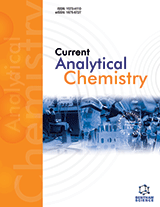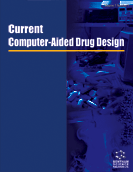Abstract
Currently, receptor based radiopharmaceuticals have received great attention in molecular imaging and radiotherapy of cancer, and provide a unique tool for target-specific delivery of radionuclides to pathological tissues. In this context, receptor binding peptides represent an attractive class of target vectors for Nuclear Medicine purposes. The rich chemistry of the group 7 elements elaborated in past years, has allowed the development of different procedures for the preparation of radiolabeled peptides in high yield. This, joint to the use of solid-phase peptide synthesis, has opened the possibility to explore new strategies for approaching the design of new class of radiolabeled receptor-targeted peptides, and to create new versatilities in targeting vehicle design e.g. in synthesis of metal-cyclized peptides or of multivalent targeting agents.
This review provides an overview on several aspects of the development of new 99mTc/188Re-peptide based target specific radiopharmaceuticals, in particular on the synthetic strategies employed for modifying molecular vectors, and the application of the different metal-cores and/or building block for preparing high specific activity agents.
Keywords: Technetium, Rhenium, Peptide, Theragnostic, Maximum Tolerated Dose, RADIOLABELED PEPTIDES, Target-Molecules, Direct Labeling, octapeptide lanreotide, Phosphine
Anti-Cancer Agents in Medicinal Chemistry
Title:Chelating Systems for 99mTc/188Re in the Development of Radiolabeled Peptide Pharmaceuticals
Volume: 12 Issue: 5
Author(s): Cristina Bolzati, Davide Carta, Nicola Salvarese and Fiorenzo Refosco
Affiliation:
Keywords: Technetium, Rhenium, Peptide, Theragnostic, Maximum Tolerated Dose, RADIOLABELED PEPTIDES, Target-Molecules, Direct Labeling, octapeptide lanreotide, Phosphine
Abstract: Currently, receptor based radiopharmaceuticals have received great attention in molecular imaging and radiotherapy of cancer, and provide a unique tool for target-specific delivery of radionuclides to pathological tissues. In this context, receptor binding peptides represent an attractive class of target vectors for Nuclear Medicine purposes. The rich chemistry of the group 7 elements elaborated in past years, has allowed the development of different procedures for the preparation of radiolabeled peptides in high yield. This, joint to the use of solid-phase peptide synthesis, has opened the possibility to explore new strategies for approaching the design of new class of radiolabeled receptor-targeted peptides, and to create new versatilities in targeting vehicle design e.g. in synthesis of metal-cyclized peptides or of multivalent targeting agents.
This review provides an overview on several aspects of the development of new 99mTc/188Re-peptide based target specific radiopharmaceuticals, in particular on the synthetic strategies employed for modifying molecular vectors, and the application of the different metal-cores and/or building block for preparing high specific activity agents.
Export Options
About this article
Cite this article as:
Bolzati Cristina, Carta Davide, Salvarese Nicola and Refosco Fiorenzo, Chelating Systems for 99mTc/188Re in the Development of Radiolabeled Peptide Pharmaceuticals, Anti-Cancer Agents in Medicinal Chemistry 2012; 12 (5) . https://dx.doi.org/10.2174/187152012800617821
| DOI https://dx.doi.org/10.2174/187152012800617821 |
Print ISSN 1871-5206 |
| Publisher Name Bentham Science Publisher |
Online ISSN 1875-5992 |
 13
13
- Author Guidelines
- Bentham Author Support Services (BASS)
- Graphical Abstracts
- Fabricating and Stating False Information
- Research Misconduct
- Post Publication Discussions and Corrections
- Publishing Ethics and Rectitude
- Increase Visibility of Your Article
- Archiving Policies
- Peer Review Workflow
- Order Your Article Before Print
- Promote Your Article
- Manuscript Transfer Facility
- Editorial Policies
- Allegations from Whistleblowers
Related Articles
-
Current Understanding of HSP90 as a Novel Therapeutic Target: An Emerging Approach for the Treatment of Cancer
Current Pharmaceutical Design Recent Advances in Molecular Modeling and Medicinal Chemistry Aspects of Phospho-Glycoprotein&#
Current Drug Metabolism Design, Synthesis, Biological Evaluation and In Silico Studies of Few Novel 2-Substituted Benzothiazole Derivatives as Potential EGFR Inhibitors
Letters in Drug Design & Discovery Gonadotropin-Releasing Hormone and GnRH Receptor: Structure, Function and Drug Development
Current Medicinal Chemistry Inhibition of PI3K/Akt Signaling: An Emerging Paradigm for Targeted Cancer Therapy
Current Medicinal Chemistry - Anti-Cancer Agents Safety and Side Effects of Cannabidiol, a Cannabis sativa Constituent
Current Drug Safety Altered Steroid Metabolism and Insulin Signaling in PCOS Endometria: Impact in Tissue Function
Current Pharmaceutical Design A Highly Sensitive Chemiluminescence Method and Application in Rapid Pharmacokinetic Study of Matrine in Rat Plasma
Current Pharmaceutical Analysis Intramolecular Processes and Their Applications in Prodrugs Approaches- Experimental and Computational Studies
Current Organic Chemistry Delivery of Peptidic Gonadotropin Releasing Hormone Antagonists
Current Drug Delivery Magnetic Resonance Imaging Findings of Sixth Cranial Nerve Palsies in Patients Presenting with Diplopia
Current Medical Imaging Small Non-Coding RNAs as Novel Therapeutics
Current Molecular Medicine Contrast-enhanced Ultrasound for Liver Imaging: Recent Advances
Current Pharmaceutical Design Autocrine Motility Factor Possesses a Possibility of Developing a New Target for Anti-Cancer Treatment
Current Cancer Therapy Reviews Current Advances in Retroviral Gene Therapy
Current Gene Therapy Two Novel GPER Agonists Induce Gene Expression Changes and Growth Effects in Cancer Cells
Current Cancer Drug Targets Bioinformatics Study of RNA Interference on the Effect of HIF-1α on Apelin Expression in Nasopharyngeal Carcinoma Cells
Current Bioinformatics Short-Term Intra-Nasal Erythropoietin Administration with Low Sialic Acid Content is without Toxicity or Erythropoietic Effects
Current Neurovascular Research Function and Regulation of Let-7 Family microRNAs
MicroRNA Patent Selections
Recent Patents on Biomarkers


























